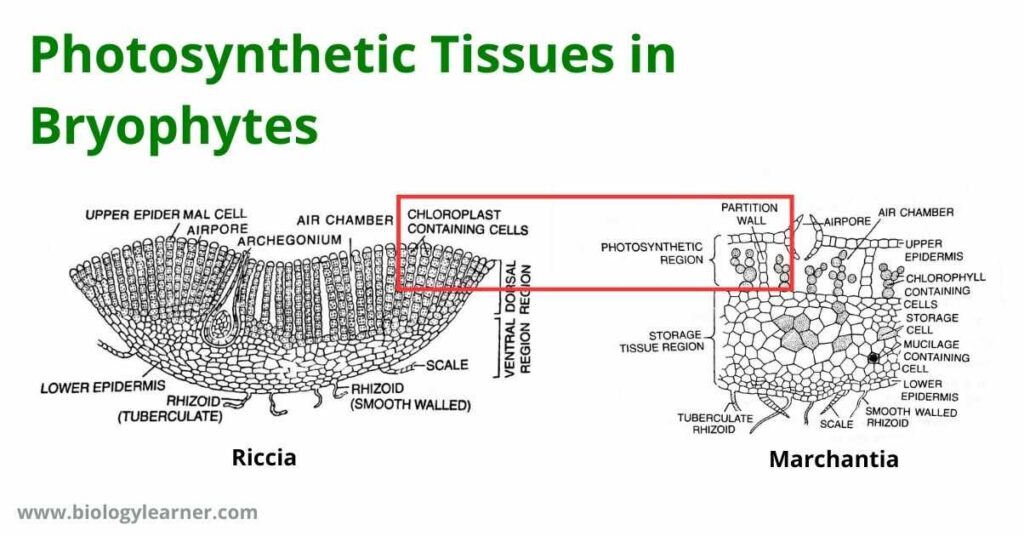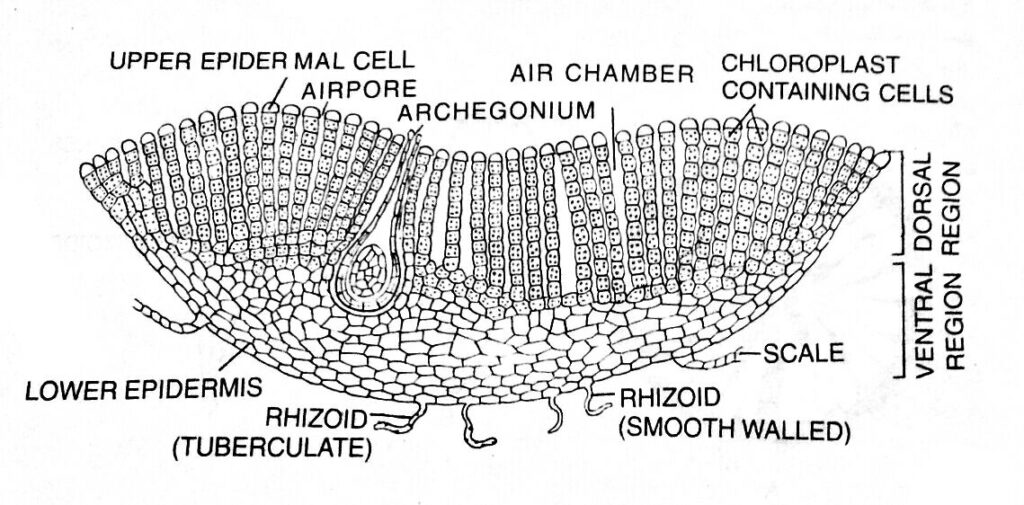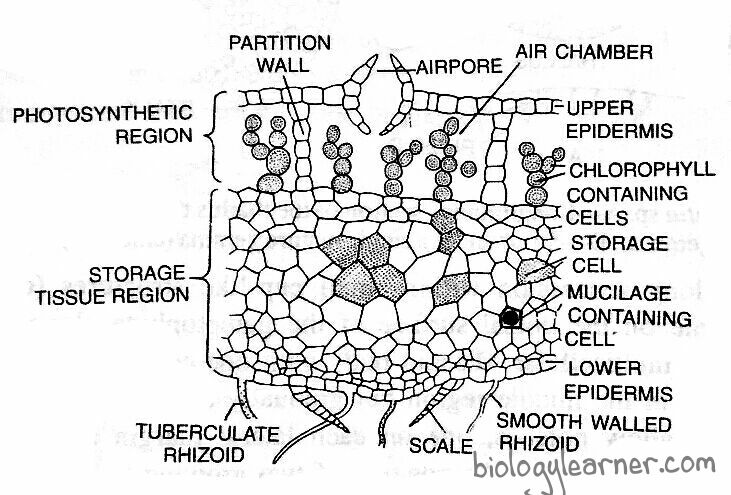The photosynthetic tissues are the chloroplast-bearing cells. These cells are present only in the gametophytic plant body or in the thallus in Riccia and Marchantia.
While in other Bryophytes, photosynthetic tissues are present in both gametophytes and sporophytes.
Photosynthetic Tissues
In Bryophytes, most of the photosynthetic tissues are relatively small, flattened, and ribbon-like structures.

The photosynthetic tissues (chloroplast bearing cells) among the members of bryophytes are distributed as:
Riccia
The gametophyte of Riccia has a dorsiventral structure. The ventral portion of the thallus consists largely of colorless cells containing starch. Above this, the dorsal region (on the upper surface) is composed of chloroplast bearing cells arranged in vertical tiers and they are separated by narrow vertical air chambers.
In Riccia, therefore, the photosynthetic system is very simple, the thallus is divided into the ventral storage system and upper (dorsal) photosynthetic and ventilating systems.

Marchantia
The thallus of Marchantia is composed of dorsal as well as ventral portions. The air chambers are horizontal and lie towards the dorsal surface. From the floor of the air chambers, numerous branched or simple chloroplast-bearing cells arise vertically. These cells contain numerous chloroplasts and comprise the photosynthetic tissue.
The lowermost cells of the photosynthetic tissues are funnel-shaped. They serve the purpose of translocation of synthetic products to the ventral storage tissue.
The sporophytes of Riccia and Marchantia lack chloroplast-bearing cells (photosynthetic tissues).

Porella
The members of leafy Jungermanniales (Porella) possess chloroplasts in each cell of the leaves of the gametophyte and thus form a photosynthetic organ.
Anthoceros
The cells of the thallus are more or less all alike in Anthoceros. There is no differentiation of ventral and dorsal tissues. Each cell of the thallus contains a single chloroplast with a paranoid. So the photosynthetic tissue in Anthoceros is uniformly distributed within the plant body and is very simple.
In Anthoceros sporophyte, photosynthetic tissue lies in the jacket of the capsule (the cells of the jacket contain chloroplasts). The functional stomata are also present in the outer layer of the jacket.
Sphagnum
Chlorophyll-containing cells are confined within the leaves in Sphagnum. This photosynthetic tissue is alternately arranged with dead hyaline cells.
The sporophyte bears photosynthetic pigments within the jacket cells of the capsule.
Polytrichum
The gametophore of Polytrichum possesses photosynthetic tissue within the green aerial leaves. The chloroplast-containing cells are arranged vertically towards the upper surface of the leaf.
The sporophyte also contains photosynthetic tissue in the jacket of a capsule and within the air space which is traversed by filaments of chlorophyll-containing cells.
Funaria
Here, the photosynthetic tissue is distributed in the cortical cells of the aerial stem and in the cells of the lamina or wings of the leaves of the gametophore.
The sporophyte of Funaria also contains photosynthetic tissue and which is restricted in the massive spongy parenchymatous cells lying next to the epidermis. The cells of trabeculae also contain chloroplasts.




